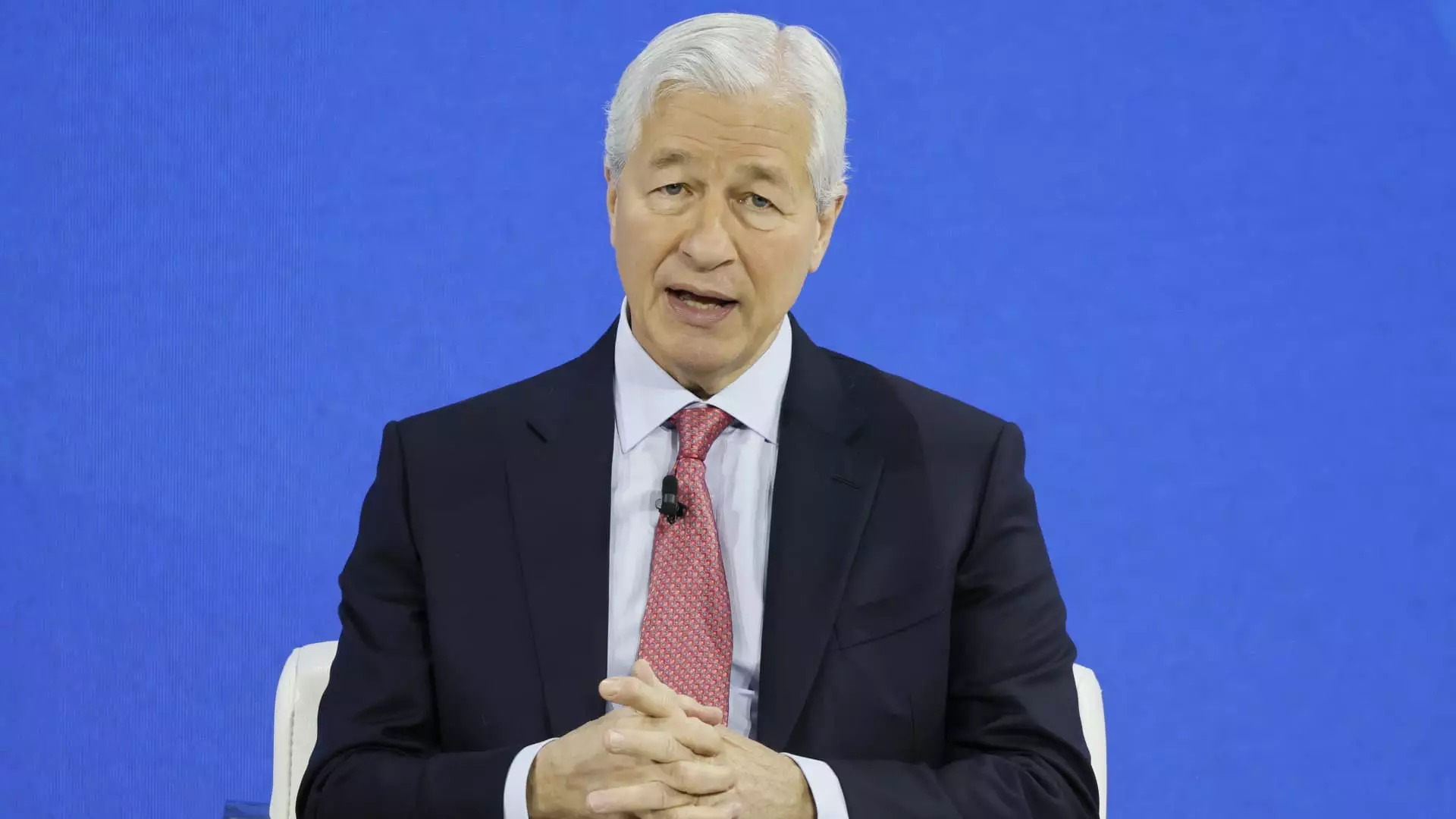In the ever-evolving landscape of the financial sector, JPMorgan Chase’s recently released third-quarter results have emerged as an enlightening case study for analysts and investors alike. The bank reported earnings that surpassed expectations, showcasing the complex interplay of interest income, regulatory challenges, and market realities. This article delves into the key takeaways from JPMorgan’s latest financial report, examining both the accolades and potential hurdles that lie ahead.
JPMorgan Chase posted earnings of $4.37 per share, beating the expected $4.01, with a total revenue of $43.32 billion compared to the estimated $41.63 billion. Despite these impressive figures, it’s essential to highlight that profit saw a decline of 2% from the same quarter last year, landing at $12.9 billion. The increase in revenue—up by 6%—was partly driven by a notable bump in net interest income (NII), which rose 3% to $23.5 billion.
The bank’s success in generating higher interest income is a significant indicator of its operational strength. This surge can be attributed to strategic gains from securities investments and a thriving credit card business. While such metrics present a positive outlook, they also invite scrutiny, particularly in the context of a shifting economic landscape and regulatory challenges looming on the horizon.
CEO Jamie Dimon’s comments during the earnings call resonated with themes of cautious optimism and regulatory foresight. Addressing the pressures from regulators to bolster capital reserves, Dimon argued for a reevaluation of existing regulations, suggesting that current rules, while designed with good intentions, may not effectively foster economic growth. His remarks underline a pivotal crossroads for the banking sector, where maintaining robust capital levels must harmonize with the dynamism of economic expansion.
Dimon’s perspective is particularly notable given the context of increasing geopolitical risks that he described as “treacherous and getting worse.” This sentiment echoes the concerns that many financial leaders share as global uncertainties mount, challenging the stability of markets and the broader economy.
In addition to its interest income gains, JPMorgan’s Wall Street division performed admirably, with investment banking fees soaring by 31% to $2.27 billion. This exceeded analysts’ expectations, revealing the bank’s strong positioning within the investment banking sector even in turbulent times. Furthermore, fixed income trading remained stable at $4.5 billion, while equities trading saw a remarkable jump of 27% to $2.6 billion.
These figures underscore a broader trend in investment activities that may provide a buffer against the anticipated tightening of profit margins as interest rates fluctuate. With the Federal Reserve’s monetary policy potentially shifting, JPMorgan’s position as a leader in investment banking could serve as a crucial asset in maintaining its bottom line.
While JPMorgan Chase has thrived in a rising interest rate environment, the recent discussions around potential rate cuts raise pertinent questions about future profitability. As the bank recalibrates its forecasts for net interest income, the expectation of lower margins looms large. CFO Jeremy Barnum’s acknowledgment that the third-quarter spike in NII might not indicate a sustainable trend highlights the inherent volatility faced by financial institutions.
This cautious outlook is significant as the bank moves closer toward its full-year guidance for net interest income, now projected at approximately $92.5 billion. This adjusted figure reflects an upward revision from earlier estimates but also an implicit recognition of the delicate balance financial institutions must strike in adapting to evolving monetary policies.
In summation, while JPMorgan Chase’s third-quarter performance painted an optimistic picture of profitability and market engagement, it also raised fundamental questions about sustainability in a shifting economic landscape. The juxtaposition of soaring investment fees against the backdrop of declining profits suggests that while the bank navigates these financial waters adeptly, vigilance is paramount. The coming months will reveal how well JPMorgan can adapt its strategies in response to both regulatory scrutiny and the Federal Reserve’s monetary policy shifts, ultimately determining its trajectory in the competitive banking industry.

Leave a Reply